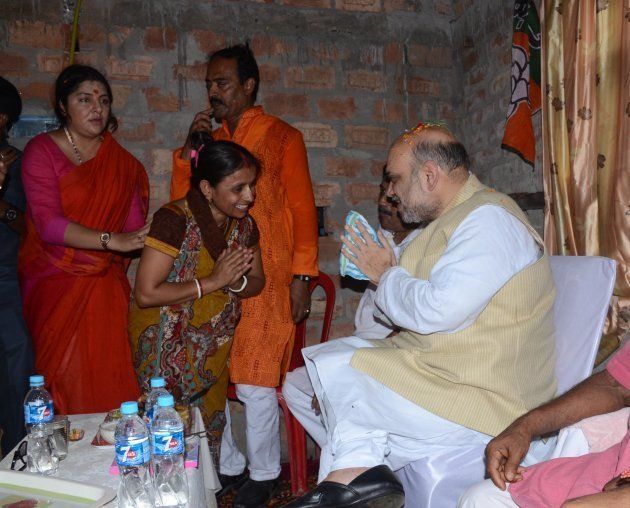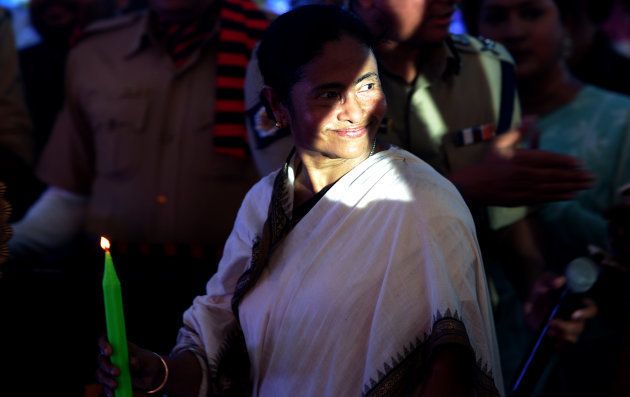
The panchayat polls scheduled for 2018 in West Bengal will be the real test for Mamata Banerjee to gauge whether she continues to hold the rural electorate in her thrall. It will also be an indication of how much the BJP has strengthened its base at the grassroots level.
The rural polls hold the key to the subsequent 'bigger' elections. They act as a barometer for good governance. It is said that the political party that has control over the panchayats in the state also wins the Assembly elections — such is the impact of the panchayat at the grassroots.
This system of elections in local bodies is held at anchal, block and district levels — the gram panchayat (anchal), panchayat samitis (block) and zilla parishads (district). The three-tier panchayat system was instituted in 1978 in Bengal. The Left Front (LF) had always banked heavily on the panchayats, and they were the key to LF's uninterrupted rule for 34 years in Bengal.
Assembly election in Bengal is still four years away, but the Lok Sabha polls are scheduled for 2019, and therefore, the panchayat election results will be an indication of what the outcome of the Lok Sabha polls is likely to be.
Out of the total population of 91,276,115, in West Bengal (as per the 2011 Census), the rural population is 62,183,113. The state has a population density of 1,028 persons per sq. km. A large part of the rural population will vote in the panchayat polls and the results will largely determine who is politically most powerful in the state.
Assembly elections in Bengal are still four years away, but the Lok Sabha polls are scheduled for 2019, and therefore, the panchayat election results will be an indication of what the outcome of the Lok Sabha polls is likely to be.
Will the Trinamool Congress achieve a comprehensive win that will enable it to counter the forceful 'Modi factor' in the Lok Sabha polls? Has the BJP made much of a dent in the rural areas given the perception that post the Uttar Pradesh elections it is influencing voters all over Bengal? How much of this impact can actually translate into panchayat votes in Bengal? Will there be a repetition of the recently held Kanthi Dakshin (Contai South) Assembly seat bypolls, in which the Trinamool won, the BJP stood second, and the Left was pushed to the third position? No wonder then that even as the panchayat polls are scheduled a year from now, all major political parties in the state have already begun the groundwork for the elections.

BJP president Amit Shah visited different parts of the state and met party workers at booth levels last week. Mamata Banerjee had already commenced her district tours by then. Banerjee already began holding administrative meetings in March — these are review meetings in which she looks at the progress of projects being implemented in rural areas. She has also been meeting elected members of the panchayats and her party workers during these tours.
The rural local self-government election is key to gauging a party's support base because a huge number of projects are implemented through these bodies.
The panchayats execute projects in a decentralised way — involving major poverty alleviation programmes, employment of the extreme poor, improving social and physical infrastructure of rural areas and so on. The process involves spending anything between ₹2,000-3,000 crore annually which come from state and Central government projects.
In the 2013 panchayat polls, Trinamool Congress won 55.8 percent of gram panchayat seats, which is the lowest tier of the panchayat. The party also won 13 out of 17 zilla parishads, the highest body in the three-tier system. Trinamool had also won 6,272 seats out of 57,000 panchayat seats, uncontested — an indication of the kind of power the party wielded. The Left Front's share was 22.9 percent and the Congress won approximately 7 percent of the gram panchayats. The BJP's presence was negligible. While there were several hung bodies, the Trinamool Congress managed to capture many of these in subsequent stages.
The big worry for the Trinamool Congress this time are the gram panchayats in which local, village issues can be a major factor.
The big worry for the Trinamool Congress this time are the gram panchayats where local, village-level issues are a major factor. Communal tensions, which can also be a big issue in the villages, have been keeping the ruling party on tenterhooks. But issues related to development and implementation of schemes that actually benefit the poor will be important factors in the two upper tiers of the panchayat election. Mamata Banerjee wants to score the maximum here because development has been her major USP since she assumed power.

She had been accused of appeasing beneficiaries because her government projects involved handing out bicycles to bangles, and shoes to school books, to school-going children in backward and poor regions. However, her critics were silenced once she came with an even better mandate in 2016 than the one that propelled her to power in 2011.
Has the situation changed for Banerjee since 2016, just one year after her party's major win in the Assembly elections? The panchayat elections will surely tell.
Also on HuffPost India
